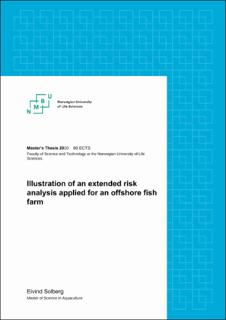| dc.description.abstract | Escaped farmed salmon and infestation of salmon lice represent the two biggest threats to the long-term survivorship of wild salmon populations. These two issues, together with other environmental-related issues, have made it necessary for the Norwegian Government to impose stricter regulations on salmon production at sea. So far, the regulations have limited the growth expansion within some of the designated production areas and have further forced companies to move farms to more exposed locations.
As one of many measures, the Norwegian Government has established a temporary license scheme, allowing the issuance of licenses for innovative solutions to combat these issues. The licensing scheme has led to the development of so-called offshore farms. These farms are designed to withstand the harsh environmental conditions at the open sea and are being perceived as a favorable solution to combat the issue of salmon lice, as well as solving the limitations in the availability of production areas near the coast.
Considering that these farms are expected to increase in dimension, with larger containment of salmons, the risk of fish escape can become potentially high. While offshore farms are designed to withstand the harsh environmental conditions at the open sea, uncertainties will always be present when new technology is being introduced.
An extended risk analysis was made to better account for the uncertainties of potential failures leading to fish escape incidences, using the upcoming offshore "Havfarm 1" for illustration. The risk analysis has been illustrated specifically for the farm's net pen system, where risk descriptions have been made on account of experts' belief of risk and the knowledge to which these beliefs are based.
As the risk analysis, to a greater extent, considers the uncertainty dimension of risk, it is more in line with how risk has been conceptualized and measured in recent years. | en_US |

